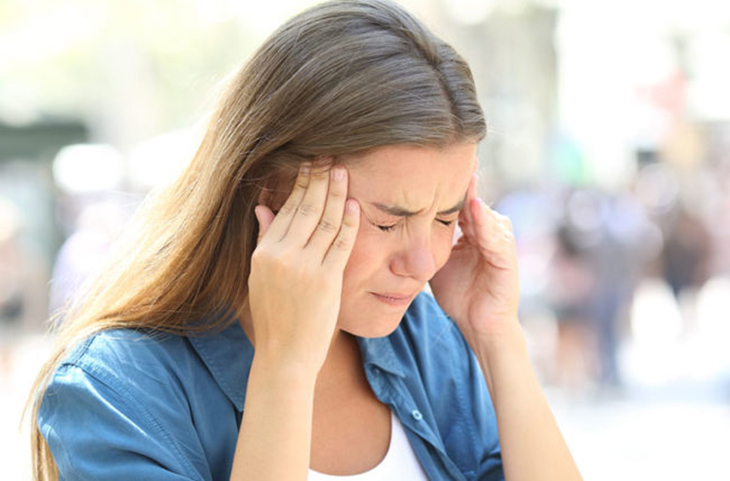
Those who suffer from cluster headaches say that these may last only from 15 minutes to one hour. Unfortunately, these can also happen for days at a time or for weeks in a row. Although this condition seems to happen a lot in men, the rare number of women who have these experience the extremely painful kind that could be longer-lasting and may often go misdiagnosed or undiagnosed.
Compared to the other types of headache, cluster headache isn’t as common. This is a series of short but extremely painful episodes that can happen for many days or weeks at a time and this can be excruciating and uncomfortable. In fact, the pain can sometimes be unbearable that these attacks have been termed as “suicide headaches.”
“Historically, about half the patients who had them would kill themselves [because] the pain was so bad,” said Merle Diamond, MD. She is the managing director of the Diamond Headache Clinic and the director of the Diamond Inpatient Headache Unit at Saint Joseph Hospital in Chicago. “It’s a knife-searing pain. People have described it as having a hot poker through their eye or somebody stabbing them through their skull,” she added.
This crippling pain has been recorded to happen more among men. A new study published this month in Neurology, the journal of the American Academy of Neurology, saw this but the report also stated that women who suffer from this could have longer and more chronic episodes as opposed to men.
“Cluster headache is still often misdiagnosed in women, perhaps because some aspects can be similar to migraine,” said Andrea C. Belin, PhD. She is the study author and is of the Karolinska Institute in Stockholm, Sweden. “But, according to our results, females generally may be more gravely affected by cluster headache than males. I still meet female study participants who have been told by neurologists that they can’t have cluster headache since they’re women, even though the symptoms match. We want to increase the awareness that women can have cluster headache, too.”
The Difference Between Cluster Headaches and Migraines
A typical cluster headache can go anywhere from 15 minutes to even three hours, as some reports have stated. Migraines are very different because these last from 4 to 72 hours, said Nada Hindiyeh, MD. She is a headache specialist and co-chair of the American Headache Society’s electronic media committee.
Another difference between the two: “Cluster attacks are strictly unilateral — they do not shift sides of the head. Migraine headaches can be unilateral but they do not have to be, and can be all over the head,” explained Dr. Hindiyeh.
A cluster headache can result to a drooping eyelid, a red eye, stuffy nostrils, or flushing of the face or ears. More than 37 million Americans suffer from migraine, while cluster headache have been reported by only one million Americans, as per the Human Health Project.
Dr. Diamond said that someone suffering from migraine would want to pull the covers over their head, wanting silence and zero light, and not having the desire to move from one place to the next. “If you have cluster headache, on the other hand, you may be pacing around. I’ve seen people banging their heads against the wall just to kind of get themselves away from the level of pain they’re having,” she said.
Women Are Twice as Likely to Suffer from Cluster Headache as a Chronic Issue
For the latest research made, Dr. Belin and her colleagues analyzed data from 874 people who have been diagnosed with cluster headache. Among them, two-thirds were male and one-third were female. They were then asked to fill out a detailed questionnaire that talked about symptoms, medications, headache triggers, and lifestyle habits.
While all of them suffered from cluster headaches, the study authors found that the percent of women who had chronic cluster headache was about twice the number — or 18 percent compared with 9 percent of men. Chronic cluster headache was said to be attacks that happen for one year or more without interruption. These also may have short intermissions where the sufferers don’t feel symptoms and these often last less than three months.
Belin and her team also saw that the women in the study had longer-lasting attacks than men. About 8 percent of women said that they had bouts that lasted for an average of four to seven months. As for the 5 percent of men, this was less. Then, there was 26 percent of women who said that their bouts on average lasted less than a month, compared to the 30 percent of the opposite sex.
It was also more common in women to report that their attacks occurred at various times during the day, 74 percent as opposed to the 63 percent. And, 15 percent of the women reported having a family member who also suffered from cluster headache, compared with 7 percent of men.
Many Women Could Be Misdiagnosed
In the past, this condition has been linked mostly the men. Hence, many women have been misdiagnosed, said Belin. That could be changing soon because in an accompanying editorial in Nuerology, researchers wrote that estimates of the male to female sex ratio for this type of condition was once thought to be 6 to 1, but the figure has decreased over the years to as low as 1.3 to 1.
Robert Cowan, MD, a professor in the Stanford University School of Medicine department of neurology and neurological sciences, said that the fact that this is more common in one sex more than the other should not make it harder to diagnose.
“Whether it is 2 times or 3 times as common in one sex or the other is not really important,” said Dr. Cowan. “It is not difficult at all if you know the criteria. For example, breast cancer is about 100 times more common in women than men. But it still happens [in men]. You need to know these statistics, but what is important is that you recognize the clinical presentation.”
Although the authors of the study did not look deeper into the causes of the more chronic kind of cluster headaches in women, Cowan hypothesized that estrogen, which is the sex hormone behind the development of the female reproductive system, could be the culprit. “Cluster is viewed as a disorder originating or regulated by the hypothalamus [an area of the brain that produces hormones],” said Cowan. “The hypothalamus is rich in estrogen receptors, so that might be a clue.”
Bottom Line: Women and Cluster Headaches
As the authors summarized their findings, they said that doctors still misdiagnose cluster headaches in women. One possibility could be because certain symptoms of the disease in women resemble the signs of migraine.
“It is therefore of utmost importance for physicians to be aware of these sex differences when working in the clinic and meeting headache patients to be able to give the most effective treatment as fast as possible,” they said at the conclusion.



